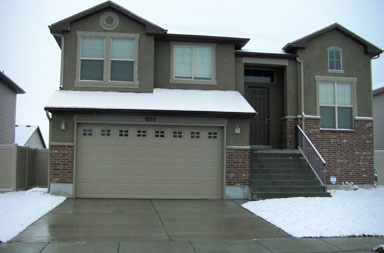What are the Best Options for Keeping Your Driveway Clear of Snow and Ice?
Every year it comes, and every year we fight it. I’m talking about snow . . . lots and lots of snow. Sure, it’s pretty and helps to put us in a festive, holiday mood, but the truth is that snow can drain our wallets, sap our strength and even impose on our sleep or leisure time.
Most folks who live in cold climates have become somewhat accustomed to getting up a little earlier or staying up a little later in order to shovel snow from their driveways or clear their roofs and gutters. Usually the shoveling of snow is followed by the disbursement of salt or other snow melting chemicals. Some homeowners – and businesses especially – opt to pay someone else to manually remove the snow. But is manual snow removal really the best way to rid our sidewalks and driveways of snow and ice? There is, in fact, another option – radiant heat.
Radiant heat snow melting systems are fully automated, so once they are installed, there’s no need to worry about snow removal ever again. Electric snow melting systems consist of three components: The heat cable, a snow sensor (activation device), and controller. (Hydronic systems also include a boiler and pump.)

The heat cable features a thick wire that is surrounded by layers of insulation, copper grounding braid and a protective outer layer of PVC or polyolefin to form a flexible cable about ⅛ to ¼ inch in diameter. Cable is available on spools as well as in mats. These mats have the heat cable that is pre-spaced and attached to a mesh backing, and can be customized (cut) to suit virtually any type of layout, including driveways, ramps, common walkways and sidewalks, etc.
The activation device for the snow melting system activation device can be either an aerial-mounted or pavement-mounted snow sensor. These sensors activate the system when there is moisture present and the temperature is below approximately 38 degrees. Most systems also include a manual timer to preheat an area before a large storm to curb snow and ice accumulation or to eliminate snow drifts.
When the snow sensor detects the right conditions, it signals the control unit which then sends power through the heat cable. The system warms the surface quickly so that the first snowflakes melt immediately as they land on your heated driveway.
Electric and Hydronic Radiant Snow Melting Systems
What are the Pros and Cons of each Method of Radiant Heating?
First of all, it is important to clarify that one method of radiant heat cannot claim universal superiority over the other. Both types of radiant heat are popular. That being said, each system does possess distinct attributes and advantages.
Electric Radiant Snow Melting Systems
Electric snowmelt systems utilize rugged heat cable that distributes heat evenly across the surface of the driveway or sidewalk. The heating cable is durable enough that it can be installed in new concrete pours, under pavers and even in harsh, high-temperature new asphalt construction projects. It is secured to the remesh and generally spaced at 6 inches while being embedded within about 2 inches of the surface.
The Top Advantages of Electric Radiant Snow Melting Systems
Ease of Installation – Electric radiant heat systems are fairly easy to install. (Handy do-it-yourselfers can do most of the installation. It is important, however, for a qualified electrician to install the wiring.)
Energy Efficient – Electric radiant systems boast a rapid response time, heating the area quickly and efficiently (99% of all energy goes to snow melting, so there is virtually no wasted energy).
Lower Installation Costs – Because electric systems can be installed quickly and easily, the installation costs are minimal.
Maintenance Free – Electric radiant heat systems do not use any moving mechanical parts, so the system is virtually maintenance free.
No Mechanical Room is Required – Electric systems consist of three main components: the heat cable, a snow sensor (activation device), and the controller. So, unlike hydronic systems that utilize a boiler and pump, there is no need for a mechanical room.
SUMMARY: For small to medium sized snow melting applications, electric radiant heat is generally the best choice.
Continued: Read Part II
